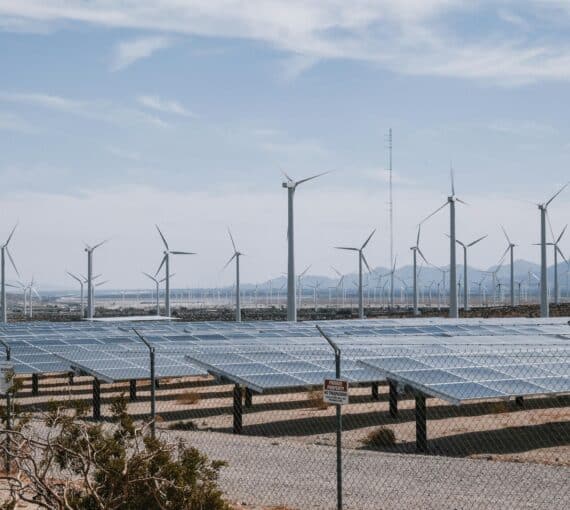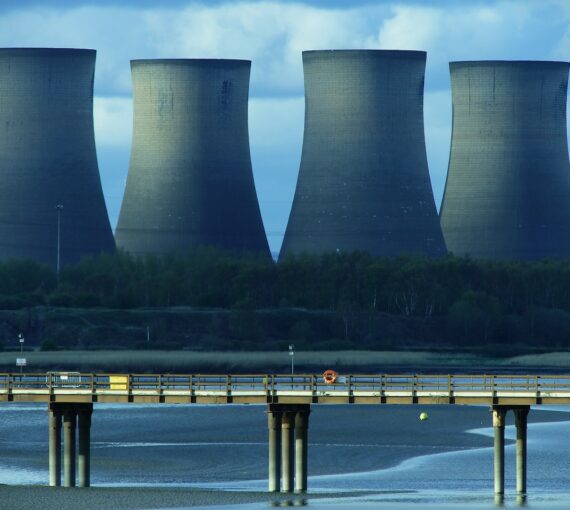
A pilot cave at final depth for the Onkalo spent nuclear fuel repository in Finland. (Photo: Wikimedia Commons)
Note: This column has been revised to correct some outdated and erroneous information.
As the consequences of burning dirty, climate-altering fossil fuels hit harder by the day, many are seizing on nuclear power as a “clean” energy alternative. But how clean is it?
Although it may not produce the emissions that burning fossil fuels does, nuclear power presents many other problems. Mining, processing and transporting uranium to fuel reactors creates toxic pollution and destroys ecosystems, and reactors increase risks of nuclear weapons proliferation and radioactive contamination. Disposing of the highly radioactive waste is also challenging.
It’s an all-too-common story: industrial wastes disposed of in communities that need the money such projects promise.
The people living in Ignace and South Bruce, Ontario, are learning about the potential dangers and the proposed measures to handle the wastes firsthand. The Nuclear Waste Management Organization, a not-for-profit corporation representing nuclear power companies, has identified those communities as potential sites for disposing of six million bundles of highly radioactive waste in a “deep geological repository.” The federal government has agreed to the organization’s plans.
It’s an all-too-common story: industrial wastes disposed of in communities that need the money such projects promise.
In this case, the NWMO has already paid Indigenous and municipal governments large sums to consider its plans — ignoring communities that will also be affected along transportation routes or downstream of burial sites.
According to Canadian Dimension, industry expects to ship the wastes “in two to three trucks per day for fifty years, in one of three potential containers.” Even without an accident, trucking the wastes will emit low levels of radiation, which industry claims will produce “acceptable” exposure. Transferring it from the facility to truck and then to repository also poses risks.
The people living in Ignace and South Bruce, Ontario, are learning about the potential dangers and the proposed measures to handle the wastes firsthand.
Industry claims storing high-level radioactive waste in deep geological repositories is safe, and it likely is the safest way to dispose of the growing amounts, but so far only one site has been approved, in Finland, despite many years of industry effort. The site in Onkalo, Finland, is expected to be operational this year or next.
Canadian Dimension says, “a growing number of First Nations have passed resolutions or issued statements opposing the transportation and/or disposal of nuclear waste in northwestern Ontario, including Lac Seul First Nation, Ojibway Nation of Saugeen, Grassy Narrows First Nation, Fort William First Nation, and Wabaseemoong Independent Nations.”
Five First Nations — including Grassy Narrows, which is still suffering from industrial mercury contamination after more than 60 years — have formed the First Nations Land Alliance, which wrote to the NWMO, stating, “Our Nations have not been consulted, we have not given our consent, and we stand together in saying ‘no’ to the proposed nuclear waste storage site near Ignace.”
Groups such as We the Nuclear Free North are also campaigning against the plan.
Nuclear power is enormously expensive and projects always exceed budgets.
The spent fuel will remain radioactive for hundreds of thousands of years, and contamination and leaks are possible during storage, containment, transportation and burial. With 3.3 million bundles of spent fuels already waiting in wet or dry storage at power plants in Ontario, New Brunswick, Quebec and Manitoba, and many more to come, industry is desperate to find a place to put it all. Keeping the wastes above ground comes with its own risks, especially over longer time frames, particularly if society at some point loses the technical capacity to manage the wastes.
Even with the many risks and no site yet chosen for burial, industry and governments are looking to expand nuclear power, not just with conventional power plants but also with “small modular reactors,” meaning they could be spread more widely throughout the country.
Nuclear power is enormously expensive and projects always exceed budgets. It also takes a long time to build and put a reactor into operation. Disposing of the radioactive wastes is also expensive and creates numerous risks. Energy from wind, solar and geothermal with energy storage costs far less, with prices dropping every day, and comes with far fewer risks.
Industry must find ways to deal with the waste it’s already created, and burial in carefully engineered repositories appears to be the safest method, but it’s time to move away from nuclear and fossil fuels. As David Suzuki Foundation research confirms, renewable energy from sources such as wind and solar is a far more practical, affordable and cleaner choice.



